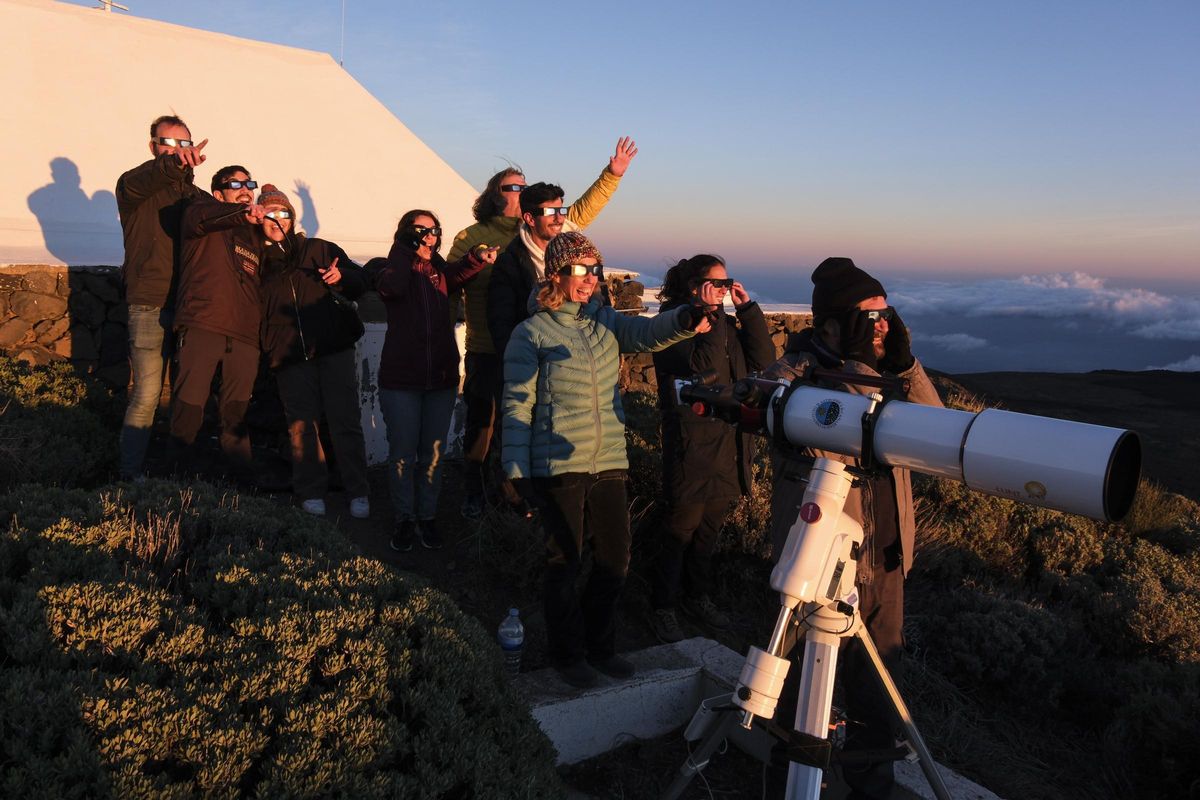On Monday, the Moon playfully pinched the cheek of the Sun in an eclipse that was partially visible in Canary Islands. Despite most of the islands being covered by a thick blanket of clouds – which slightly dimmed the astronomical event – some areas, like the north and south, were lucky to have a clear view of the satellite passing in front of the Sun during sunset.
Just before the night lights flooded the sky, the Moon decided to make a stop to cross the Sun’s orbit. Thus, between 20:17 and 20:27, those who gazed at the sea just before sunset were rewarded. On the horizon, the fortunate residents of Santa Cruz de Tenerife who could enjoy a less cloudy sky, witnessed a partial phenomenon that turned into a festive event in the United States and Mexico.
This was experienced in the town of Eagle Pass (USA), on the border with Mexico, where darkness enveloped the area for nearly five minutes. In total, the citizens of Eagle Pass enjoyed around 160 minutes between the partial and total eclipse.
The event started with some disappointment among the spectators due to the clouds. “My skin got goosebumps when it got dark and the lights came on, I couldn’t believe it,” said a woman who attended the event with excitement. “It was an incredible experience, better lived without technology, it was wonderful,” she added.
However, the wind helped and the show, dubbed the Great American Eclipse, did not disappoint.

Several individuals observe the solar eclipse from the Teide Observatory in Izaña, Tenerife / Efe
An Annual Event
Total solar eclipses occur approximately every one and a half years but only completely impact a narrow strip on the Earth’s surface. Once we move away from that strip, even if only very close, it is observed partially, making the event less striking or even overlooked. Only within the totality band does the phenomenon become awe-inspiring and usually generates pure enthusiasm among those fortunate enough to witness it.
These solar eclipses occur occasionally because the Moon does not orbit in the exact same plane as the Sun and Earth. The moment of alignment is known as the eclipse season, which occurs twice a year.
A total solar eclipse is the only type of solar eclipse where viewers can momentarily remove their eclipse-viewing glasses (which differ in characteristics from regular sunglasses) during the brief period when the Moon completely blocks the Sun.
In this respect, it’s important to remember that solar observation should always involve safety measures like using appropriate glasses to prevent damage to our retinas. It is crucial to avoid using optical systems such as binoculars or telescopes without the necessary solar filters.
Over 65 Years Without Total Eclipses
Canary Islands have not witnessed any total solar eclipse in over 65 years (1959) and will not do so again for over 200 years: in the year 2243. That year, many scientists flocked to Tenerife to witness the event and most were amazed by the clarity with which the skies of the Canary Islands revealed the cosmos.
But not all news is bad. The north of Lanzarote will be able to see one almost totally in 2078 during sunset, and the Iberian Peninsula has two important dates to witness this phenomenon in person: 2026 and 2027.
















